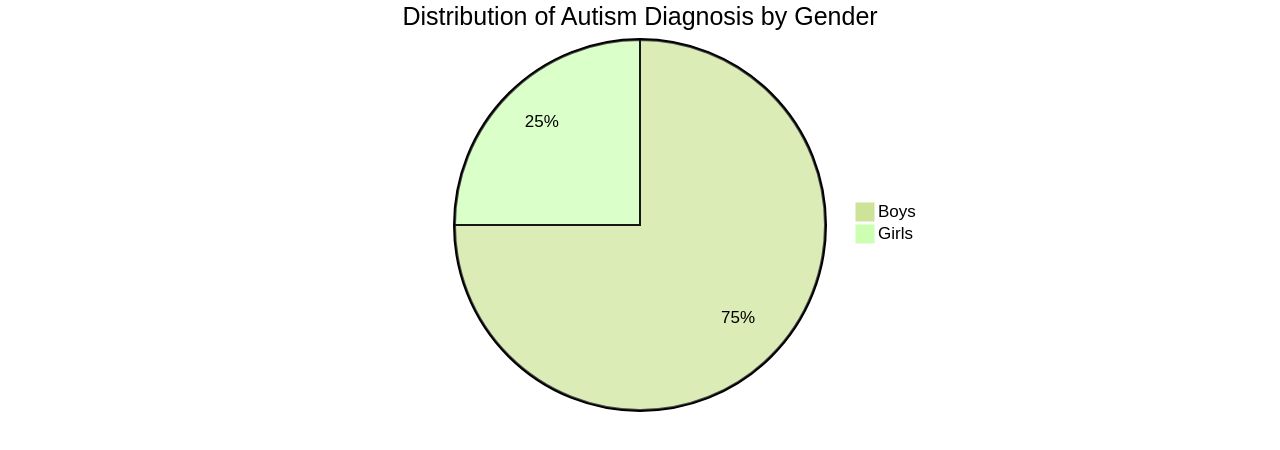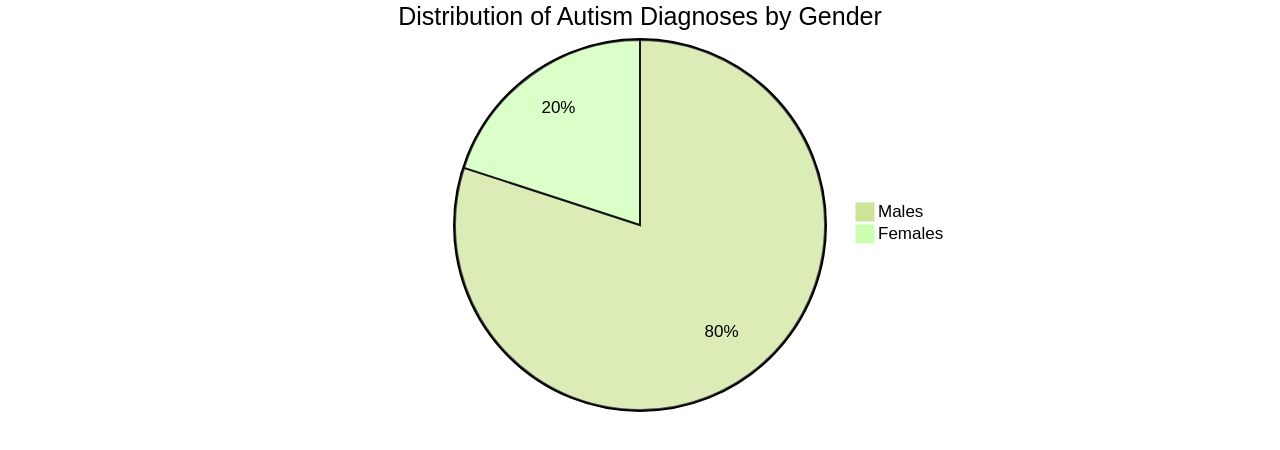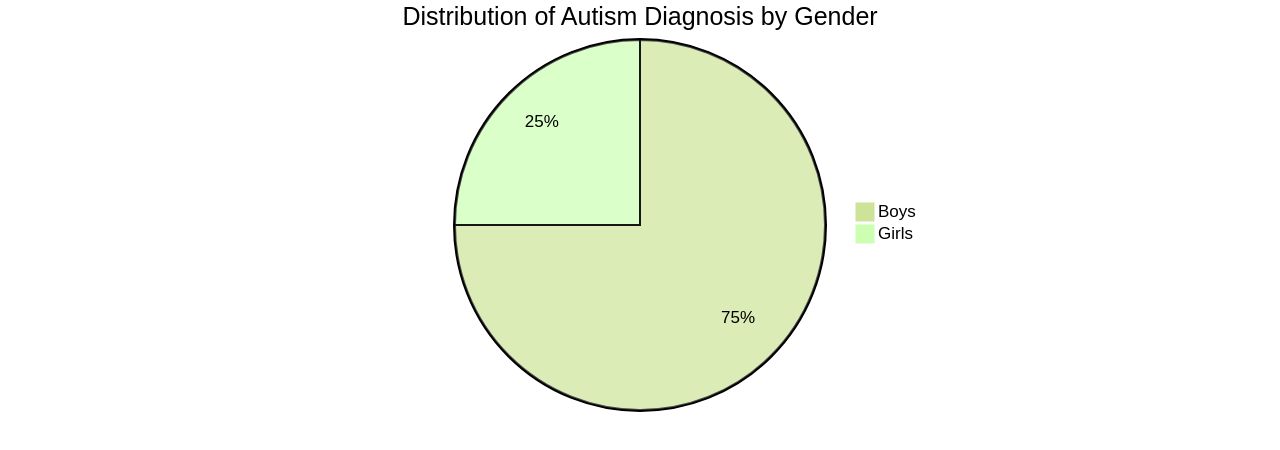Introduction
The narrative surrounding autism has largely been male-centric, which has led to an underrepresentation and misdiagnosis of autism in girls. The initial research on autism was heavily influenced by male samples, leading to a skewed perception that autism is primarily a male condition.
This has resulted in many girls with autism being overlooked, often leaving their condition undiagnosed until much later in life. It's essential to recognize that autism manifests differently in girls, often in subtler ways.
This article explores the gender disparity in autism diagnosis and the factors contributing to the underdiagnosis of autism in girls. It also discusses the importance of understanding the female experience of autism through a qualitative study. By raising awareness and improving diagnostic criteria, we can ensure that all children, regardless of gender, receive the support and resources they need to thrive.
Historical Perspective on Autism in Girls
The narrative surrounding autism has largely been male-centric, which has led to an underrepresentation and misdiagnosis of autism in girls. The initial research on autism was heavily influenced by male samples, leading to a skewed perception that autism is primarily a male condition.
This has resulted in many girls with autism being overlooked, often leaving their condition undiagnosed until much later in life. The diagnostic criteria for autism were based on observations in boys, and women, adept at masking their symptoms to blend in, often go undetected.
Recent studies suggest that the prevalence of autism is nearly six times higher in children referred to gender clinics, indicating a large cohort of undiagnosed autistic girls. It's essential to recognize that autism manifests differently in girls, often in subtler ways.
If there are concerns about a girl's development, it's advised to seek a thorough assessment from a professional familiar with autism in girls. However, this process can be lengthy due to long waiting lists for disability teams or the HSE.
Private services, staffed by accredited professionals, may be an alternative, but their credentials should be carefully verified. Prominent women like Temple Grandin, Susan Boyle, and Daryl Hannah have publicly shared their experiences with autism, bringing attention to the issue. Despite the male-to-female diagnosis ratio of autism being around 4:1, there is growing awareness that the rate of autism in females is likely higher but underdiagnosed. Moreover, the prevalence of developmental disabilities, including autism, has increased in recent years. Boys (4.66%) were more than three times as likely as girls (1.50%) to be diagnosed with autism, and this disparity calls for a reassessment of how autism is diagnosed and understood in girls. The goal is to ensure that all children, regardless of gender, receive the support and resources they need to thrive.

Gender Disparity in Autism Diagnosis
Understanding autism and its diagnosis presents a significant gender disparity. Males are predominantly diagnosed with autism, with an estimated ratio of 4:1 compared to females, as per ABS TableBuilder.
This discrepancy could be attributed to a combination of factors, such as societal stereotypes, biases in diagnostic criteria, and the unique presentation of autism in females. Experts like Professor Robyn Young and Yanan Guo suggest that because autism research has historically been male-centric, diagnostic criteria and screening practices have unintentionally developed a male bias.
This results in females, who may exhibit subtler or different symptoms, being less likely to be identified. For instance, girls with autism might appear more social or less disruptive, which could lead to them being overlooked for additional services.
This disparity is further evidenced by the fact that out of the 35% of current NDIS participants who are autistic, a whopping 70% are male. The lack of recognition and understanding of female autism has severe repercussions, affecting mental health and overall well-being. Females tend to receive a diagnosis later in life, and in many cases, remain undiagnosed. A late diagnosis can affect their ability to understand their differences and build mutual understanding with the neurotypical majority. This calls for a reevaluation of current tools and practices for diagnosing autism in females, and a shift in how clinicians perceive autism.

Factors Contributing to Underdiagnosis of Autism in Girls
Autism is often underdiagnosed in girls, a fact that can be attributed to various factors. One such factor is the common practice of 'masking' or camouflaging autistic traits. Girls with autism may adopt different coping mechanisms and behaviors compared to boys, which can obscure their symptoms and make them harder to identify.
Moreover, they may be more skilled at mimicking social behaviors, further concealing their challenges and resulting in delayed diagnosis. Autism research has traditionally focused on males, leading to a diagnostic criteria based on their experiences. This has resulted in screening biases, leaving girls and women less likely to be identified.
In fact, autism can manifest differently between genders. For instance, girls with autism can often appear more social and less disruptive, leading to a misperception that they don't require additional services. Moreover, developmental disabilities, including autism, are more common in boys.
According to a report, boys are over three times as likely to be diagnosed with autism as girls. This disparity reflects the need for greater education for clinicians to better understand how autism presents in girls and women. Additionally, the 'camouflage effect' in autism research suggests that girls may be better at hiding their autism-related challenges, leading to under-identification or delayed diagnosis.
This effect, coupled with the fact that assessments used for diagnosis are typically based on male characteristics, likely results in some girls not receiving the recognition and support they need. Therefore, it is crucial to raise awareness about the unique presentation of autism in girls to ensure they receive timely diagnosis and support. With the right support, girls with autism can overcome their challenges and achieve improved long-term outcomes.

The Female Experience of Autism: A Qualitative Study
Autism research has progressively shifted its focus to understand the experiences of autistic girls and women better. This shift is crucial as one in every 100 individuals in the UK is believed to be autistic, with boys being diagnosed three times more than girls.
These statistics suggest a gender bias in diagnosis, largely because diagnostic criteria were developed primarily based on male characteristics. However, the narrative is gradually changing as we understand how autism manifests differently in girls and women.
A qualitative study interviewing autistic girls and women unveiled themes such as social masking and sensory sensitivities, which are often overlooked due to the male-centric diagnostic criteria. For instance, autistic women are more likely to die by suicide, 13 times more than their non-autistic counterparts, underscoring the need for targeted support and interventions.
The diagnosis often comes as a liberating experience for many women, replacing confusion with clarity and self-doubt with self-understanding. It helps them comprehend why certain social interactions are draining and why sensory experiences can be overwhelming.
This understanding helps them realize that their behaviors and needs are part of a neurodivergent way of being. Despite these advancements, significant challenges remain, particularly in regions like Africa, where limited resources and trained professionals result in delayed diagnosis and intervention. These delays can have long-lasting impacts, exacerbated by misconceptions and stigma around autism. Furthermore, a recent study found that 80% of women with autism remain undiagnosed at age 18 due to societal pressure to conform, and diagnostic tools being developed based on white boys from high socioeconomic status. This highlights the urgent need for more inclusive diagnostic criteria and increased awareness about autism's diverse manifestations.

Conclusion
In conclusion, the underdiagnosis of autism in girls is a result of a male-centric narrative surrounding the condition. Autism manifests differently in girls, with subtler symptoms and unique coping mechanisms that can mask their autistic traits. This leads to their challenges being overlooked and delays in receiving appropriate support.
The gender disparity in autism diagnosis calls for a reevaluation of current tools and practices. Diagnostic criteria and screening practices have unintentionally developed a male bias, leaving girls less likely to be identified. Raising awareness about the unique presentation of autism in girls is crucial to ensure timely diagnosis and support for all children, regardless of gender.
A qualitative study has shed light on the challenges faced by autistic girls and women, such as social masking and sensory sensitivities. This highlights the need for targeted support and interventions tailored to their specific needs. However, there are still significant challenges, particularly in regions with limited resources, where delayed diagnosis and intervention can have long-lasting impacts.
Inclusive diagnostic criteria and increased awareness are urgently needed to address these issues. By recognizing and addressing the gender disparity in autism diagnosis, we can empower individuals with autism to reach their full potential. Together, we can create a more inclusive society that provides equal support and resources for all individuals, regardless of their gender or neurodivergent experiences.




